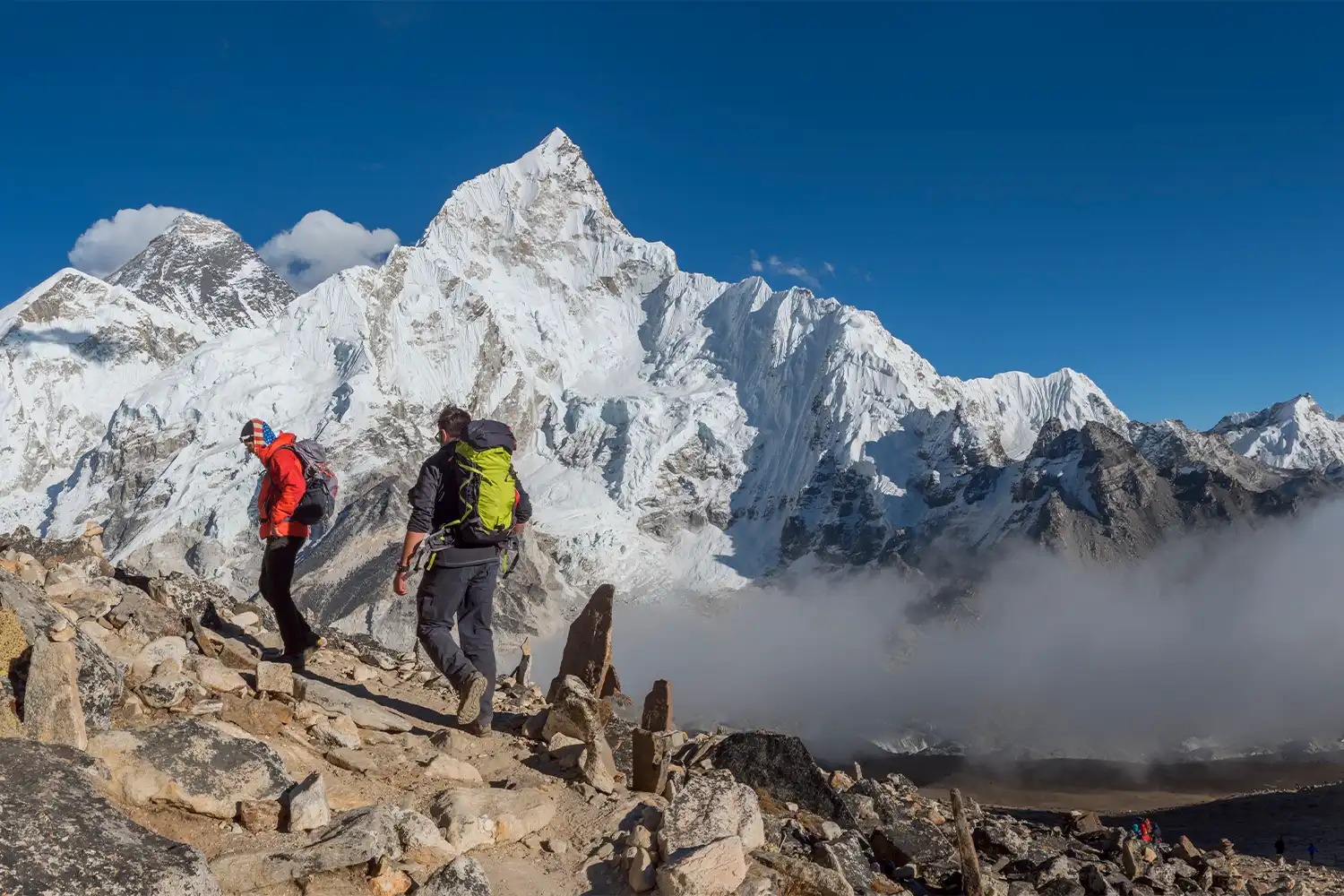Nepal, home to the majestic Mount Everest, the world’s highest peak, has introduced a major fee hike for climbing expeditions to Everest. This move has raised eyebrows among mountaineers, tour operators, and trekkers, but it also underscores Nepal’s commitment to preserving its natural treasures and promoting sustainable tourism. While the increased fees may seem daunting for some, the revenue generated is expected to benefit Nepal’s local communities, mountaineering infrastructure, and conservation efforts.
The Decision: A Hike in Mount Everest Climbing Fees
In August 2025, Nepal’s Department of Tourism announced a sharp hike in the climbing permit fees for Mount Everest expeditions. It is part of the government’s new strategy in managing the increased number of climbers and enhancing safety, sustainability, and environmental protection of the mountain.
The newly introduced fees include a 36% increase in the fees of foreign climbers aiming to climb Mount Everest. Previously, the cost for foreign climbers to secure a permit for an Everest expedition was around USD $11,000 (approximately INR 9,00,000). Under the new system, the fees could now rise to USD $15,000 (approximately INR 12,30,000)—a marked difference, but still a far cry from some estimates. The rise in the permit fees happens at a time when Nepal is struggling with overtourism along the Everest trek and a growing number of fatalities from overcrowding, lack of preparation, and inadequate equipment.
Reason for Increasing the Fee
The Nepali government has forwarded several reasons as to why there is a hike in the climbing fee. Chief among them is the intention of controlling the flow of climbers aiming to reach Everest’s summit. In recent times, the mountain has witnessed ever-increasing overcrowding during the peak climbing periods, causing very long queues at the summit and increasing the danger of accidents and deaths.
The authorities have suggested that increasing the climb fees would allow only people who are serious about the climb and have the means to attempt it successfully to reach the top. This is being viewed as a way of discouraging ill-prepared climbers who engage in unnecessary risks which sometimes endanger not only their lives but also those of the Sherpas and other climbers. A probable increase in the cost of the permit is also expected to control the number of unexperienced climbers attempting Everest, which may make the expedition safer and the mountain less crowded.
Additionally, the revenue collected from the permit will be invested in infrastructure improvement, better safety measures, and environmental protection in Everest. The money will go into the areas of waste management initiatives, upgraded medical facilities, and improved rescue operations on the mountain.
Effect on Mountaineers and Expedition Companies
A double-edged sword for professional climbers and expedition companies, these new fees would see increased cost of climbing Everest to those trying to climb. In the event that the operator takes this on the cost scale for their package offered to the client, then that will push the overall prices upwards. Alternatively, it might work to bring a decrease in climbers, hence bringing more favourable climatic conditions for the mountain.
This will make it difficult for smaller or less financially well-endowed expedition companies to stay competitive. Some apprehension exists in the minds of some about losing clients to bigger, more cash-flush agencies that can absorb the rise in fees. Conversely, higher fees may help lead to improved expeditions due to companies’ incentives to engage in more service-related activities to meet the stricter financial requirements.
For climbers, therefore, the increase in fees will largely depend on their kind of expedition. While to veteran climbers, such fees could mean a price that is relatively low for a summit on Everest, to trekker tourists or novice climbers, the fees would be prohibitive. Some fear that these new costs will ensure that the mountain is just unaffordable for way too many dreaming mountaineers to ascend it.
A Viable Future for Mount Everest
Besides the monetary consequences, this price rise marks the greater Nepali initiative to control environmental damage on Everest. Over the recent years, the climbers have thrown tons of waste around Everest Base Camp and along the path to summits. Agitated by the sheer disposal of wastes along with the accumulation of more oxygen bottles and human excreta, Everest remains burdened.
The Nepalese government has been working on dealing with the issue of waste by requiring climbers to bring back all their trash, and certified guides and porters are required to be used. The new fees are likely to support such efforts, and mountaineering industry on Everest is expected to positively contribute both to the local economy and to the environment.
Another thing is the revenues collected in the form of permit fees which would be put back into the communities surrounding Everest. This is in the forms of infrastructures, educational facilities, and health facilities. Ahead, the government will strive hard to improve living conditions. Climbing business would not have prospered without Sherpa people because they have always assisted climbers both in guiding through the Mountain and portering.
Since the name has been given to “Sagarmatha” in Nepali and “Chomolungma” in Tibetan, Everest has always represented the pinnacle of nature’s beauty and mountaineering excellence. Of late, however, with the unprecedented upsurge in treks and climbs in the region, the environmental impact is being questioned. Climbing Mount Everest is inherently hazardous, and the rise in mountaineers only adds pressure on the environment since climate change is increasingly threatening the region’s ecosystem.
The increase in fees by Nepal may be one of the most important decisions that will ensure long-term sustainability for Everest. Such money can be used to prevent climate-related damage, encourage proper waste management, and develop awareness campaigns about the ecological importance of the mountain. The government has also assured collaboration with international partners and mountaineering experts to implement new technologies and strategies that will preserve the mountain’s fragile ecosystem.
Criticism and Concern
Although the government’s intentions are good, the current fees have been widely criticized. A section of mountaineers and leaders running the expeditions have expressed distress that the new fees will bar passionate climbers from the country among other several countries with low average incomes. Another reason for concern is that the increase in fees might encourage more illegal climbing operations. However, the government will do whatever it takes to take control of climbing expeditions, but again, that is just a view that some climbers will find ways around the rules.
The government, apart from raising the fees, also needs to bring attention to matters like uncontrolled climbing by the inexperienced climbers, quality guides and services offered, and other areas of the world’s highest peak, Everest. In the last few years, a series of climbing disasters resulted in death from bad preparation or a lack of experience, a problem the government must correct by implementing broader reformations.
Balancing Change
In. This bold and risk-averse step in the context of the world’s highest height, which in recent times has been subjected to enormous stress, the Nepal government has achieved one thing by raising the cost for climbing the majestic Mount Everest. And indeed, such a rise would push up the cost for most, but gains that could accrue well might offset some of the infrastructural issues, benefit the locals, and create space for safer concerns for nature as well.
This will therefore pose a challenge in moving forward with the change and balancing it to the point that accessibility won’t compromise both safety and sustainability, and Everest, as before, is going to be a viable destination for generations of climbers. To do this would mean continually continued efforts to protect this delicate ecosystem, plus careful regulation. Adventure-seekers, climbers, and even tour operators will have to get used to this new wave of mountaineering on the world’s tallest mountain in the meanwhile.







